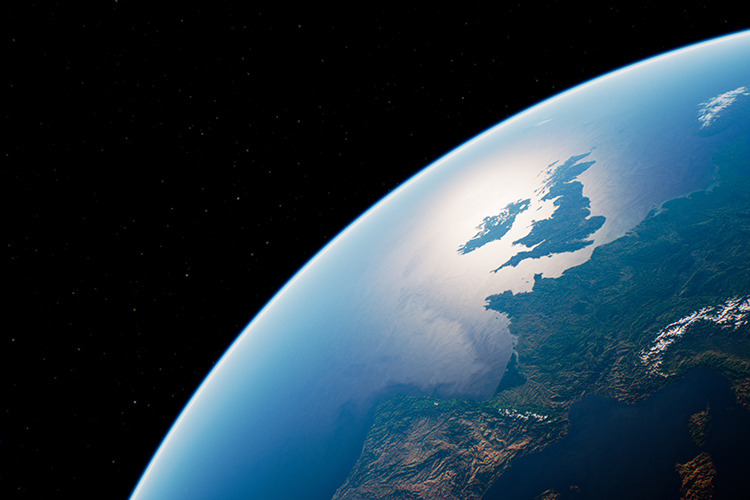 https://geographical.co.uk/wp-content/uploads/shutterstock_1507720634-1-600x400.jpg 600w" sizes="(max-width: 750px) 100vw, 750px" />
A view of Earth from space. Image: Chris J Mitchell/Shutterstock
https://geographical.co.uk/wp-content/uploads/shutterstock_1507720634-1-600x400.jpg 600w" sizes="(max-width: 750px) 100vw, 750px" />
A view of Earth from space. Image: Chris J Mitchell/ShutterstockTim Marshall on his new book, The Future of Geography and why space and geo-politics are connected
Geopolitical Hotspot by Tim Marshall
 https://geographical.co.uk/wp-content/uploads/tim-marshall-profile-pic-2-400x400.jpg 400w, https://geographical.co.uk/wp-content/uploads/tim-marshall-profile-... 150w, https://geographical.co.uk/wp-content/uploads/tim-marshall-profile-... 100w" sizes="(max-width: 450px) 100vw, 450px" />
https://geographical.co.uk/wp-content/uploads/tim-marshall-profile-pic-2-400x400.jpg 400w, https://geographical.co.uk/wp-content/uploads/tim-marshall-profile-... 150w, https://geographical.co.uk/wp-content/uploads/tim-marshall-profile-... 100w" sizes="(max-width: 450px) 100vw, 450px" />
Geography and outer space. For some, that’s a strange combination, but there is indeed a geography to space, and those two things are joined by politics, or ‘astropolitics’ as it’s now known.
The spark for writing a book on the subject came after overcoming what George Orwell described as a constant struggle ‘to see what is in front of your nose’. Once the blindingly apparent became obvious – that international relations have moved into space – it was a small step to putting fingers to keyboard.
Previous books I’ve written focused on how geography underpins some of what countries can and can’t do and, therefore, the choices of their leaders. This template isn’t an exact match when looking at astropolitics, but there are similarities.
The geography of astropolitics begins on Earth. Space-faring nations usually launch rockets eastwards to take advantage of the rotation of the planet, gain extra speed and so use less fuel. Most launch from as close to the equator as possible, where the angular velocity of the Earth is highest. Hence Russia usually uses Baikonur in Kazakhstan at a latitude of 46° north, and the Americans built Cape Canaveral in Florida (28.5° north). The spaceport closest to the equator is Korou in French Guiana, which is just 5° north and used by the European Space Agency. Launch sites are also usually located close to a large body of water to their east.
Enjoying this article? We have thousands more for you.
Get immediate access to over 1,000 Geographical magazines in our archive back to 1935.
Sign up today and you will soon be travelling back through time reading all our amazing features of the last eight decades PLUS... you also get to enjoy every new issue of Geographical each month going forward in both print and digital formats.
There are regions in space to avoid – for example, the radiation belts around Earth. There’s also prime ‘real estate’, such as geosynchronous orbits, in which a satellite moves at the same speed as the Earth’s rotation, so is always above the same territory. There are ‘oceans’ of distance to be navigated and ‘superhighways’ where a spacecraft can use a planet’s gravity as a slingshot to increase speed. The Moon has a more recognisable geography – vast plains, towering mountains, caves, tunnels and, at the poles, water in the form of ice.
We’re now well advanced in the new space race. The previous one was driven by the desire of both the USSR and the USA to prove that their political system was superior by getting to the Moon first. Now it’s more about the military and commercial opportunities space provides geopolitical rivals.
The three main space powers, the USA, China and Russia, agree with the mantra that ‘space is a war-fighting domain’ and all have versions of a ‘space force’. The rationale is that they can’t allow one of the others to call the shots in space, as it has become an integral part of warfare on Earth. Satellites are part of surveillance, targeting, missile delivery and nuclear early-warning systems. These three, along with India, have successfully tested anti-satellite weapons by firing a ballistic missile from Earth and destroying one of their own satellites. Machines designed to clear space debris can grab defunct satellites with their robotic arms, but this means they could seize a rival’s working satellite, a possibility that will tempt countries to create defensive measures. France is already talking about deploying ‘bodyguard satellites’.
Space is already central to our economies and as the realisation grows that satellites are part of our critical military and commericial infrastructure, the temptation to arm them with laser weapons will grow.
In this decade, we’re going back to the Moon. The US-led Artemis mission intends to land a man and a woman on the Moon in 2026 and build a base within the following decade. The Chinese, with Russia as a junior partner, have similar plans.
Both missions are partially about space exploration and using the Moon as a launch pad for Mars, but also about mining the Moon for its precious resources, such as lithium and silicon. Sadly, the ‘laws’ governing space exploration, and profiting from resources, are badly out of date. We urgently need a new set of internationally agreed principles. The 1967 Outer Space Treaty is a useful framework, but technology has overtaken it. The 23 countries in the Artemis Accords have agreed that if a signatory has invested in getting to the Moon, found where to mine and begun digging, it can declare a ‘safety zone’ in which other countries can’t operate. This isn’t a declaration of sovereignty, which the 1967 treaty forbids, but it’s close.
The lunar poles are thought to be where most commercial activity will take place as they’re thought to contain billions of litres of water ice, vital for manned stations. It could get crowded.
As Ye Peijian, head of China’s lunar exploration programme, recently said: ‘If we don’t go there now, even though we are capable of doing so, then we will be blamed by our descendants. If others go, they will take over and you won’t be able to go even if you want to.’













Pentru a putea adăuga comentarii trebuie să fii membru al altmarius !
Alătură-te reţelei altmarius